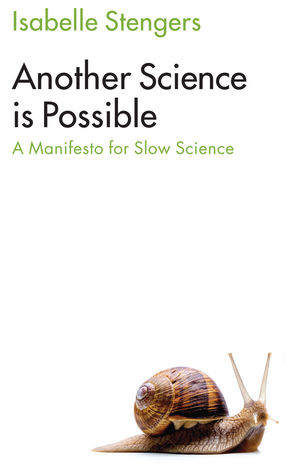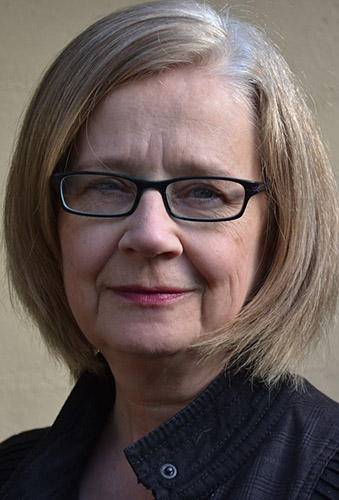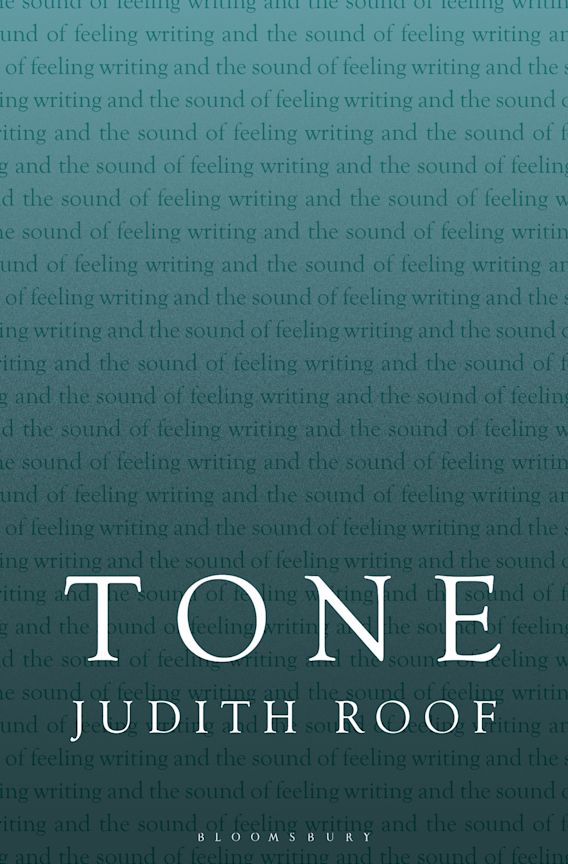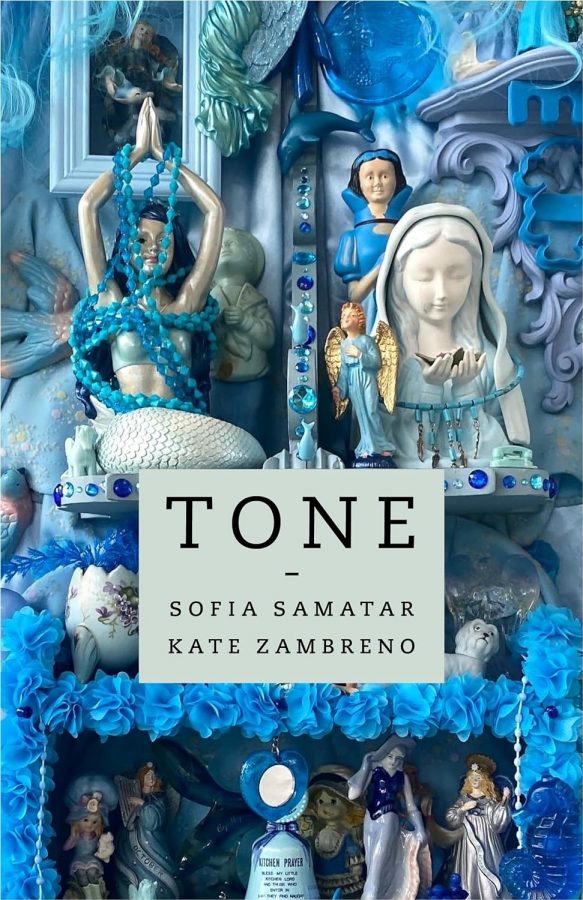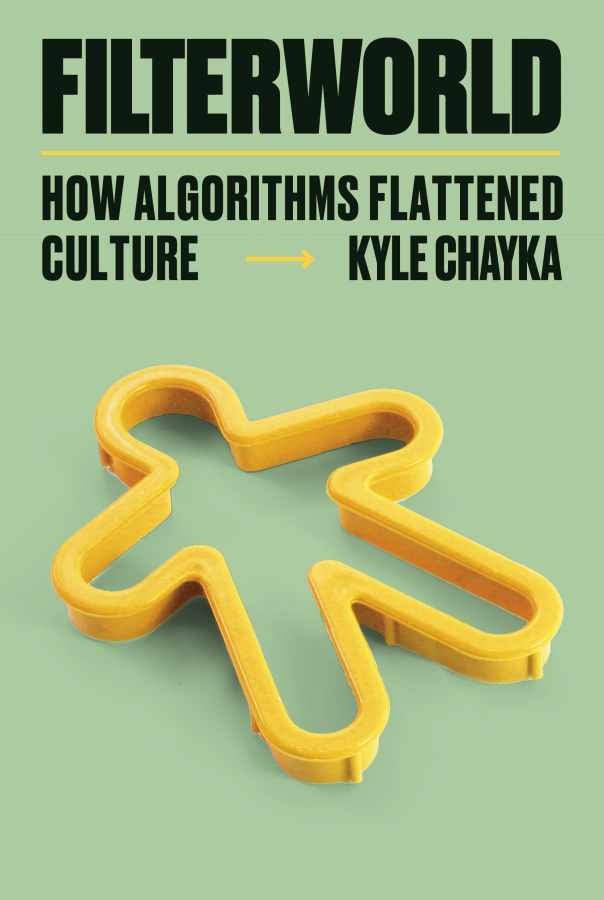What Stands to Reason: Isabelle Stengers and Peter Botsman
Who am I? Ha! My name is unimportant, for I have many names. I am one of the daione sidhe.
So begins Peter Botsman’s tale of ancient lore and transient peoples. The voice here belongs to a shape-shifting spirit whose journey begins in the ancient terrain of Éire and follows a peasant woman as she makes the convict’s journey to the Great South Land in the 1880s. There, the narrative consciousness becomes infused with the spirit – or spirits – of Aboriginal land, and takes off on a journey of its own, deep into a mythos as ancient as that from which it was born.
Peter Botsman’s profile on The Conversation website describes him as ‘an inter-disciplinary public intellectual.’ He has held a number of significant positions including Director of the Evatt Foundation, Professor of Public Policy at the University of Queensland, Executive Director of the Brisbane Institute and Director of the Whitlam Institute and the University of Western Sydney. For the past forty years, Botsman has been a prolific and cogent writer on public policy.
For someone with this track record to embark on a work of mythic narrative is an intrepid move. Wakuwal (Dream) is, as Botsman states in a brief preface, a quest for common ground between European and Aboriginal Australian traditions of spirituality, born of a conviction that there is need for a change in the national psyche. This, as he envisages it, is a change that involves re-engaging with atavistic mythologies belonging to the pre-colonial traditions of those who have migrated here and finding in these the ground for rapprochement with the mythological heritage of Aboriginal Australia.
The challenges of such an enterprise are obvious. Mythic narrative calls for an entirely different kind of language from that of public documents and critical essays.
A non-Indigenous man, Botsman is also taking risks with cultural protocols. A recent article for Guardian Australia by Indigenous novelist Claire G. Coleman reaffirms long-standing resentments of cultural appropriation: ‘White people’s practice was to ask Indigenous people for our stories, write them down, get them published and claim the royalty and copyright for themselves.’ Coleman further writes, ‘Indigenous stories are fundamental to Australia’s understanding of itself’ and in Wakuwal, Botsman is seeking access to this understanding. Wakuwal invites the question: are there ways to find some meeting ground between mythologies, without making intrusions on territory that is not ours to enter? Botsman takes a stringent line on the protocols, opening with a caveat: ‘please use this book with care.’
The provenance of its story line and his own credentials as the tale teller are explicitly set out. During the 1980s, Botsman witnessed Aboriginal ceremonies in North East Arnhem Land and developed friendships with the Yolŋu elders who presided over them. This unlocked a series of dream visions from his own ancestral tradition, as a fifth generation descendent of Irish migrants. Subsequent dialogues with Aboriginal friends and family persuaded him that he should attempt an experiment, weaving together the legends of the daione sidhe of Ireland with the story lines belonging to the first peoples of the Great South Land. Botsman does not attempt to tell Yolŋu stories, but rather to enter the imaginative domain of the story telling, under the guidance of these friends and elders. ‘Many Yolŋu eyes have helped this text as best they can,’ he attests. The scrutiny involved working closely with S D Gurruwiwi, co-author of the online dictionary of the Yolŋu language.
Daione sidhe (pronounced doina shee) are faerie people, invisible to most humans most of the time – but they will manifest themselves in situations of their choosing, individually or as a clan. They are pranksters, shapeshifters, healers and seers, able to travel at lightning speed through dimensions of time and space, yet ‘earthed’ in a literal sense, through their habitation in ancient mounds. Their relationship to modern consciousness fascinated the poet W.B.Yeats, who collected local accounts of them in The Celtic Twilight (1893), a work based on diaries he kept during a walking trip through the western counties of Ireland. Scepticism might be spreading, he observed, ‘but no matter what one doubts, one never doubts the faeries, for… “they stand to reason.”’
That’s a nice provocation, with a continuing potential to stir up the hornet’s nest of contentions about what constitutes reason, science and the forms of contemporary intelligence claiming to be constituted by them. ‘What, now, of animism?’ asked Isabelle Stengers in a presentation she gave for the Sawyer Seminar Series at UC Davis in 2013. Stengers, one of Europe’s premier scholars in the philosophy of science, wants no easy answers to the question of who or what stands to reason. The conventional scientific view of animism, she argues, is couched in the progress narrative of scientific modernity: propelled by the advancement of knowledge, civilisation moves from superstition to skeptical enlightenment and ‘thou shalt not regress’ becomes a commandment. Under this commandment, she says, we are faced with the disenchantment of the modern world.
In the context of an academic seminar ‘the disenchantment of the modern world’ comes across as a certain kind of theoretical avant-gardism, associated with a body of work published by Stengers and her co-speaker at the seminar, Donna Haraway. For their audiences, the disenchanted world is the default option, and Stengers poses the question, ‘How can we accept a return or regression to supernatural beliefs?’
There is a response to that question in the unorthodox literary experiment of Wakuwal, but from a very different cultural context. For a society in which Indigenous traditions of knowledge co-exist with those of scientific modernity, very real consequences are attached to the processes of disenchantment.
This is Botsman’s concern as he seeks to promote an engagement between the polarised cognitive worlds of contemporary Australia through the creation of a mythos in which Australian and Celtic traditions of animism are interwoven. From a literary point of view, the exercise is hazardous. While it is not uncommon for an academic writer to branch out into fiction, Botsman is attempting something that moves outside the bounds of modern literary convention. Although there are Joycean elements, Wakuwal is closer in genre to the mediaeval dream vision than to the modern novel. Yeats was alert to the challenges of supernaturalism even within his own tradition, and curious about how attempts to engage with it would result in rambling sentences or a proliferation of allegoric figures. There was, he admitted, a ‘vast and vague extravagance at the bottom of the Celtic heart.’
Against this, the Yirrkala Church Panels that are Botsman’s acknowledged inspiration for the Aboriginal dimensions of his story exhibit extraordinary aesthetic precision and narrative density. The panels, two four-metre strips of masonite painted with sacred designs of the Yolŋu clans, were installed in the Church in 1962 as counterpart to its Christian iconography. Now also recognised as a land rights statement, they formed the basis for the Yirrkala bark petition presented to Parliament in 1965, in protest against an application to license bauxite mining on Yolŋu land. Ultimately, the decision went against the Yolŋu, though with provision for compensation and monitoring. Such are the processes that decree the primacy of one knowledge tradition over another, and such are the consequences.
The Yirrkala Panels illustrate the predicament at the heart of Botsman’s enterprise. Aboriginal stories are told in song, dance and painting. The intricate structure of the panels, their elaborately cross-referenced symbolism, the minute detailing of their narrative frames, are impossible to replicate in literary form. What kind of language will serve to communicate the fusion consciousness he seeks to evoke? What kind of voice will convey the presence of an entity that can take on the form of a dog, or ride on the shoulder of a human being, or rise in atmospheric haze to conduct dialogues with ‘Old Man Fog?’
Lyric writing, as Yeats understood perhaps better than anyone, may come across as spontaneous effusion but requires subtle control. Two lines from Yeats’s ‘The Countess Cathleen in Paradise’ serve as an epigraph for the second chapter of Wakuwal:
Yet she goes with footstep wary
Full of earth’s old timid grace.
The wariness exercised so sternly on the matter of cultural protocols is not always matched by restraint in the style of Wakuwal. The footsteps must at all times retain their timid grace. Faeries inhabit beings and forces that are other than human, and human thought processes do not map onto them. Inevitably, some form of cognitive anthropomorphism creeps in and the mental world inhabited by the narrative voice is cluttered with elements that belong to a twenty-first-century cosmopolitan awareness. How would a transhuman entity ‘see’ the massive global transitions taking place through the later decades of the nineteenth century? In the sweeping overview, the lyric mode wears thin: ‘Irish and Russian dynasties would merge in the great jigsaw puzzle of life and criss-cross again with Germany, county Mayo, county Clare and the wild Westmeath territory.’ A few pages later, there’s further slippage, into the zone of twentieth-century pop psychology: ‘As ever, there were great blockages of ego and selfishness.’
My purpose here is not to slight, but to stress that this is a seriously difficult kind of writing to pull off. The relationship between language and consciousness comes under new kinds of pressure in every phase of the narrative. What does this being know, and on what terms? There are passages where Botsman experiments with a Joycean stream of consciousness, running across pages in succession with hardly a paragraph break. Some readers might feel that it doesn’t work, because the payoff in stylistic virtuosity is not sufficient to compensate for the density of the prose, but we should not be too quick to evaluate experiment, or to assume we know where it is going.
The book opens with a vision of the aerial spirit rising into the stratosphere where all consciousness of time and space is lost. ‘Through cracks and holes the universe unfolds.’ It’s an inspired way of suggesting that the material transmigrations of the spirit arise from an essential emptiness, which is the enabling condition for a migration between spiritual traditions. To attempt a liaison between mythologies from opposite sides of the planet, however imperfectly it is realised, is an act of courage involving profound imaginative commitment. Sometimes remarkable things happen on the page: a narrative line, a turn of phrase, or a perspective that has the ring of truth. At the start of the third chapter, Botsman embarks on an alphabetical invocation the names of all the traditional peoples of Australia – Indigenous and non-Indigenous – inviting the reader to speak them aloud, slowly, to allow the vibrations to arise and, along with them, a world seen with new eyes. A stream of words in search of consciousness – that’s another stretch of literary convention, but stretching of some kind is what this is about. For twenty-first-century century small-screen addicts who are bound in a nutshell, captured by illusions of infinite space, this is an exercise that makes radically unfamiliar demands.
Stengers might recommend it as an exercise in reverse ethnography, a step in the direction of the more open and expansive knowledge economy she advocates in her latest book, Another Science is Possible. Its subtitle, A Manifesto for Slow Science, is shared with a 2010 German manifesto that calls for a break with four hundred years of technologically-driven science whose forward momentum is responsive to that of an industrially-driven economy, and a return to modes of enquiry that would allow the scientist time to think. But Stengers has a more ambitious agenda. She envisages a slow science that could be part of ‘the struggle against the imperialist disqualification of non-modern ways of understanding nature.’
This raises the question of who she is writing for. Who might have ears to hear in the laboratories where cultures of training lead to ‘arrogant and naïve forms of communication, devoid of the critical thinking they so often boast about,’ and where much vaunted commitments to experimental research are bound up with ‘cultivated disinterest in the messy complications of this world.’ Whether they are listening or not, Stengers writes with a stern admonition for all of us who are believers in the hierarchical knowledge economy over which they preside – and the word ‘believers’ here is used advisedly.
One of her rhetorical strategies is to reverse the evaluative terminology of nineteenth-century colonial science, to accuse laboratory scientists of living in a Peter Pan fantasy conjured up with promises of a future they can never deliver. Instead of the smooth-running, infinitely producing world they persist in imagining, their efforts have left us in an unholy planetary mess that gets worse by the year. And as for their history of purporting to represent the higher levels of cognition that are the defining component of ‘civilisation’ in its opposition to the ‘barbarism of those cultures still wallowing in a state of intellectual backwardness… well they must learn to present themselves in a civilized manner. And that means recognising that others have ways of finding meanings, tracing connections, and making things matter.
Ultimately, the appeal is addressed to the public as adjudicators. In place of the academic term ‘public understanding of science,’ Stengers proposes a public intelligence of the sciences. We the people should think about what concerns us without being over-ruled by claims from experts about ‘what we know.’ Questions about the public and its intelligence, though, are of a kind philosophers of science love to wrestle with. Everyday conversations don’t often move in this direction. ‘Professionalism has been mated with progress’ is a great catchphrase for a lecture, but one that is unlikely to get the conversation moving up a gear at a backyard barbeque.
Stengers is trenchant on the issue of ‘esoteric’ and ‘exoteric’ relationships in the knowledge economy. ‘Esoteric’ communications take place within disciplines, amongst those who are credentialed insiders in a particular field of enquiry. Exoteric dialogue occurs in the public domain, between scientists and laypeople who cannot expect to know or understand the sophisticated terms of front-line scientific enquiry. In such dialogues, the listening public is typically regaled with summary accounts of ‘what we know,’ and expected to take them on trust. A determination to challenge this dichotomy might have led to a different kind of book, one directly addressed to the general reader, and offering some specific ideas about what might constitute an intelligent line of questioning on a particular scientific matter. But such writing does not come naturally to Stengers. She is a philosopher through and through, and her own engagements have been predominantly esoteric, in the form of seminars and lectures held within the academy.
That’s not to suggest that this is a difficult book. The lines of argument are clear and well illustrated. At just over 150 pages, it is quite succinct and the translation by Stephen Muecke gives ease and fluency to the prose. Interested undergraduate students with some guidance in the relevant disciplines should have no difficulty with it. It is, though, essentially a book for the academy, because its arguments are contextualized within debates in science and philosophy. It is also, fundamentally, a plea for universities to play a different role in the knowledge economy, one that fosters the ‘slow science’ approach to all areas of enquiry. Ten years ago, Stengers writes, she was ready to declare that the academy was a dying institution, ‘richly deserving its fate.’ Today she sees things differently. The destruction of the academy would eradicate resources needed to address the future, not as the never-never land promised by biotechnologists, but as one in which the earth itself is under imminent threat.
A central paradox in her argument is the proposition that slow science is the necessary response to an overwhelming urgency. The reasoning goes something like this. Ours is a time of confusion, anxiety and perplexity. Our ecosystems are in crisis, all around the planet. And here she introduces the word Gaia, the name James Lovelock and Lynn Margulis used to invoke an Earth that is something more than ‘the totality of the resources available for our use.’ Gaia is no passive victim in Lovelock’s polemical mythos; she takes revenge. Or as Stengers puts it, ‘“We” face a devastating power suddenly intruding into the stories we tell about ourselves.’ ‘“We” here extends beyond the academy, to a general public who are both victims and beneficiaries of what we have been taught to call scientific advancement. We have endorsed a great divide, she says, between ‘peoples’ project their beliefs onto nature, and a more clinical order of consciousness that sees through such backwardness.
Gaia is her challenge, precisely because the term, with all its mythological associations, has been such a sticking point in scientific culture. Naming Gaia, Stengers insists, signals the irruption of a transcendence we can no longer be denied by those who equated human emancipation with the denial of transcendence. What does it take to break the commandment ‘thou shalt not regress?’ To begin with, it takes time. It requires an apprenticeship in knowledge traditions that have never undergone a divorce from animism. Botsman has evidently undertaken just such an apprenticeship, one that, in Stengers terms, involves ‘weaving relations with different peoples and nations.’ Ursula Le Guin, who died earlier this year, made a similar call in her 2014 speech at the National Book Awards:
Hard times are coming, when we’ll be wanting the voices of writers who can see alternatives to how we live now, can see through our fear-stricken society and its obsessive technologies to other ways of being, and even imagine real grounds for hope. We’ll need writers who can remember freedom—poets, visionaries—realists of a larger reality.
Reading Another Science is Possible and Wakuwal in succession, I am struck by the thought that Stengers and Botsman have written the same treatise in different languages, and from different places in the human psyche. They issue the same call for a tectonic shift in the cognitive landscape.

